Kasbah Amridil and the Todra Gorge Circus
I can’t believe that this is already my eleventh post from the October, 2025 Adventures Abroad Quintessential Morocco Tour and we are just at the halfway point. We have already visited the Imperial cities of Rabat, Meknes and Fes, the Roman ruins of Volubilis and crossed the Atlas Mountains to the western edge of the Sahara Desert. In the last two posts we explored the oasis town of Rissani and then ventured into the desert by camel to watch the sunset from the top of Erg Chebbi, one of the largest dunes in the Sahara. This morning we’ll leave the Sahara proper and head west making our way toward the Atlantic Ocean, but that will take a few days as there are a lot of things to see and do between here and there. In this post we’ll visit Todra Gorge, one of Morocco’s most famous natural wonders and then have a tour of Kasbah Amridil. We’ve been staying in kasbah styled hotels the last two nights and they were great, but Kasbah Amridil is the real deal. If you’ve ever wanted to be taken to the kasbah, then this is the post for you.
We leave the Kasbah Tombouctou by way of the paved road back to Rissani and Erfoud, there being no need to traverse the rocky hamada a second time. Today will be a mostly driving day, our final destination being the city of Ouarzazate which is 365 kms. (227 miles) away, but as noted there will be some very interesting stops.
The first is not a stop, but rather a very slow progress through a date market that straddles both sides of the road just outside Rissani. There are seemingly hundreds of date sellers and buyers in what is clearly a genuine local market with no hint of vendors looking to rely on the tourist market.

In fact our bus is a hindrance to many of the sellers who have arrived in carts drawn by small horses or donkeys. These are the type of moments and scenes that I genuinely enjoy on these Adventures Abroad tours almost as much as the ‘real’ attractions that lured me here in the first place.

After about an hour we are out of the Tafilet oasis and passing through a landscape that has a different look, but with an austere beauty of its own. There is enough grass to support a few wandering goat herds and the occasional camel, but not much more. The Atlas Mountains are an ever present backdrop and then we come upon what, if I didn’t know better, would think were termite mounds.
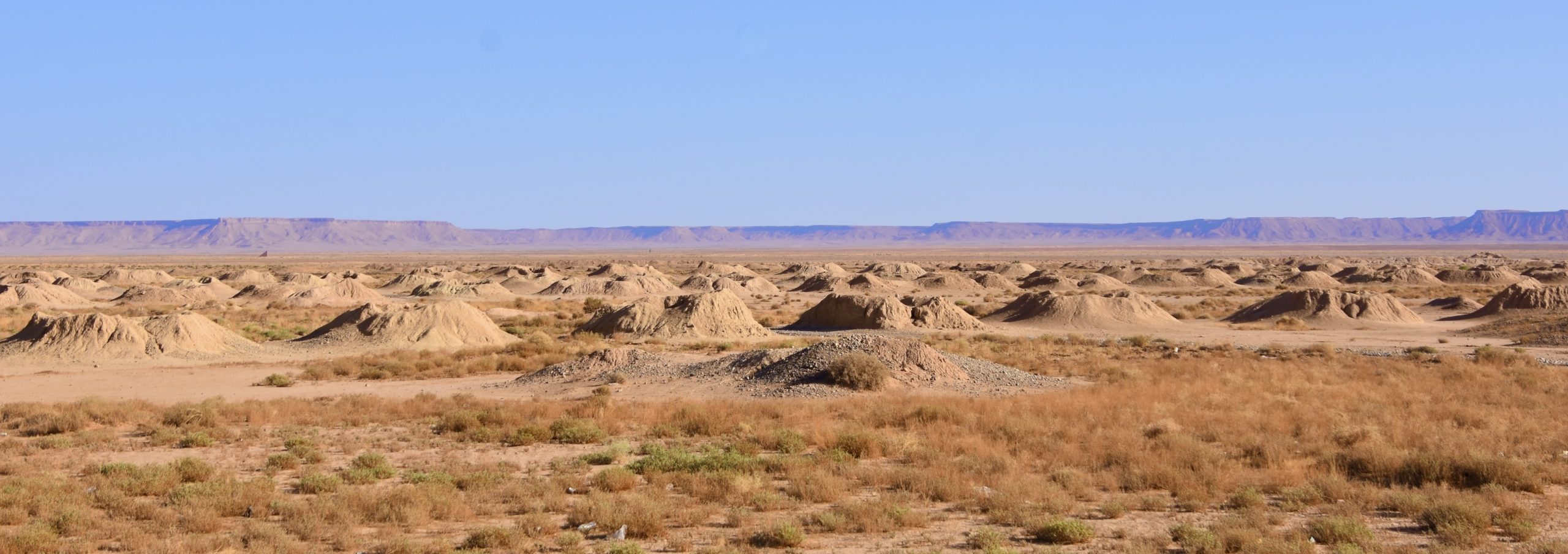
They’re not termite mounds, but rather a type of well structure called a khettara which is unique to Morocco and dates back to the 10th century.
We stop to get a closer look at one and they are really quite ingenious. They are like underground aqueducts that are bringing water from those mountains in the distance by way of gravity alone. Like the Roman aqueducts they have an almost imperceptible grade than keeps the water flowing. The farther from the mountain source the deeper the distance between the surface and the water. This one was at least fifty feet deep.

Although khettaras have largely been replaced by more modern methods of transporting water, a number of them are still active sources of both drinking water and for irrigation. They are also recognized by the UNESCO Intergovernmental Hydrological Programme. which aims to promote sustainable water practices around the world.
We continue on to our next stop before Kasbah Amridil, the Todra Gorge which is not far from the small city of Tinerhir. This is a view of the city from a ridge we have climbed on our way to the gorge.
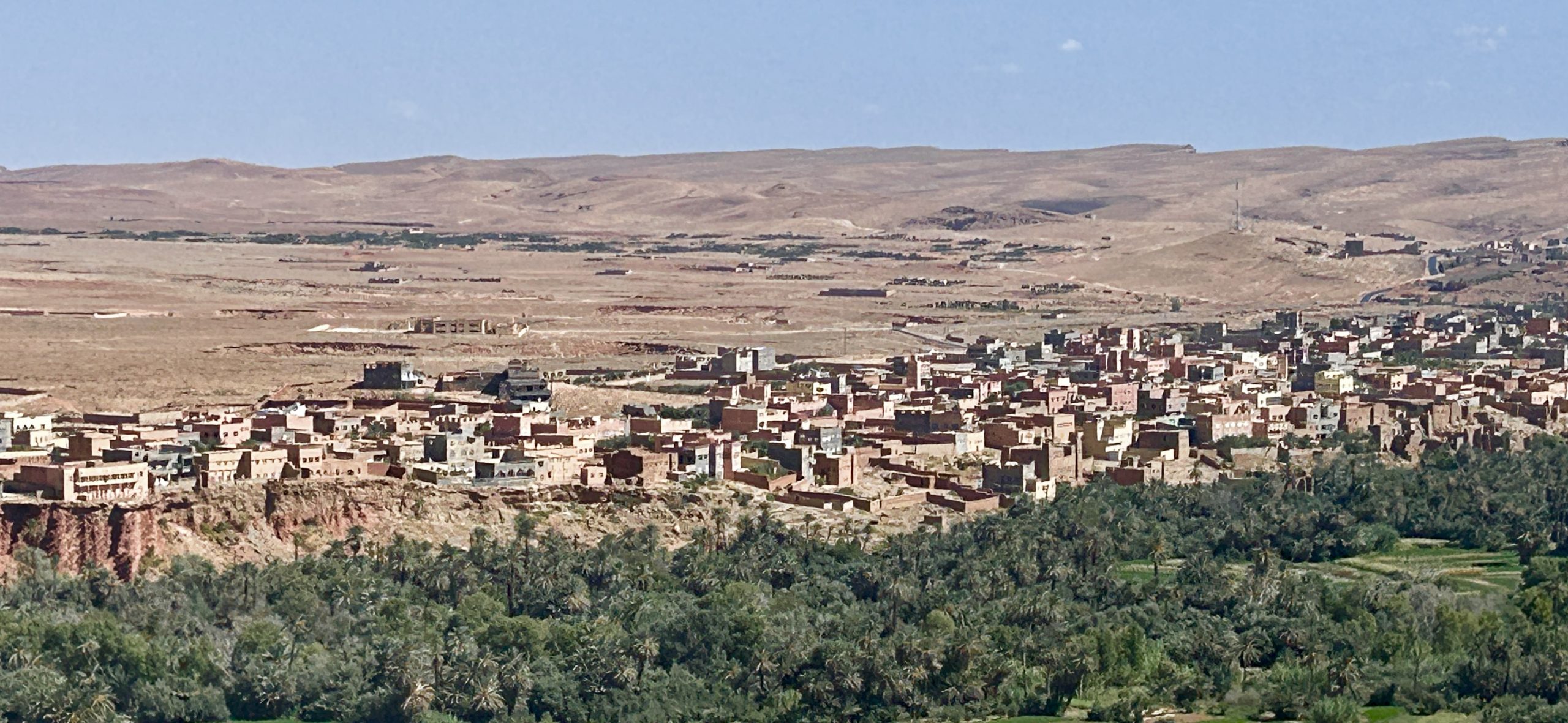
Todra Gorge
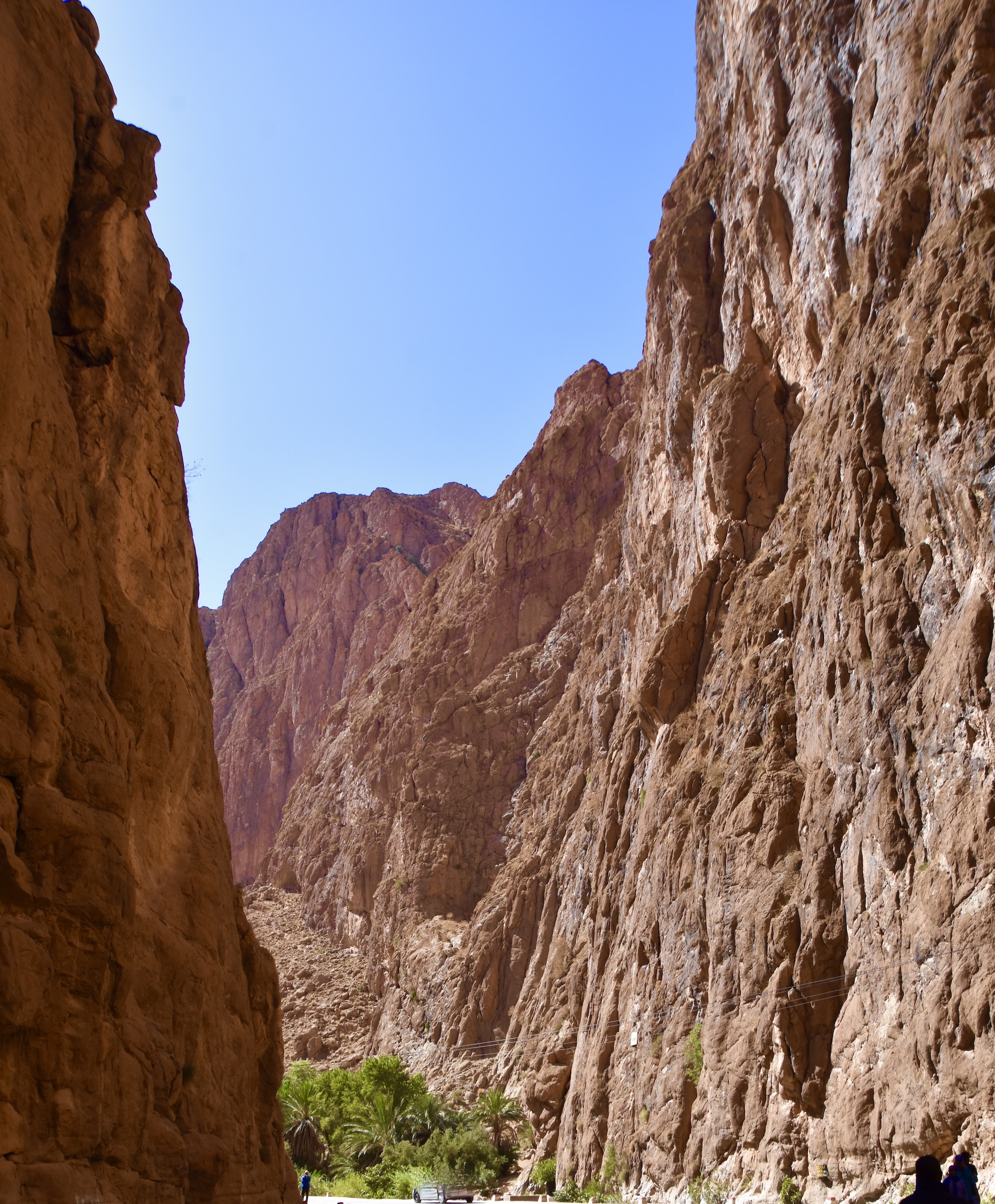
Morocco is a county with a lot of gorges – I can find at least a couple of dozen with just a cursory glance through my Rough Guide map. The only problem is that most of them are quite difficult to reach so that means that the one that is easiest to reach, Todra is also the one everyone goes to. And I mean everyone.
The photo above does capture a bit of the majesty of the place with its sandstone cliffs that in this spot rise as high as 160 metres (525 feet). Further in the cliffs are as high as 400 metres (1,312 feet), but very few buses, including ours, go past this narrow opening.
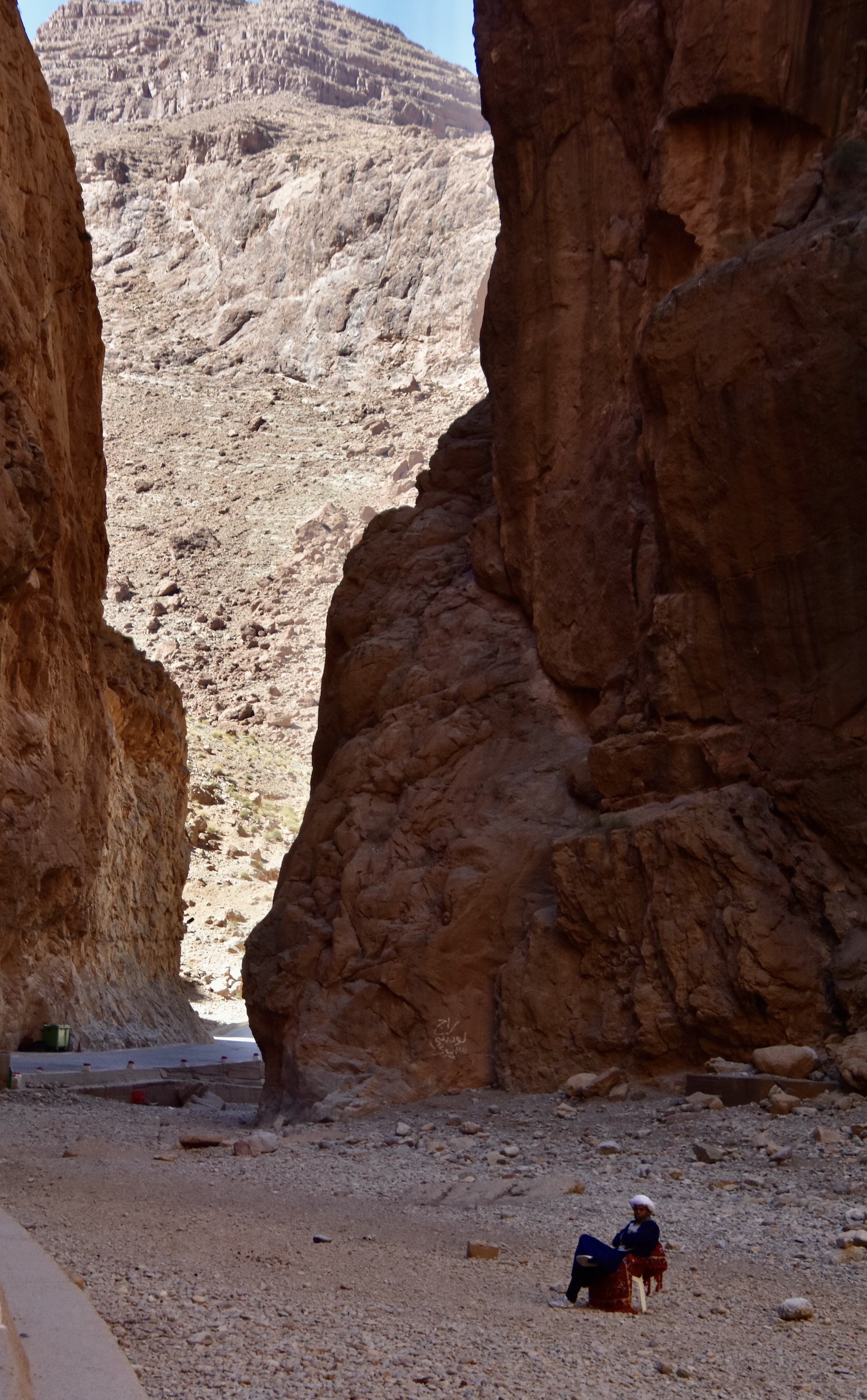
The result is that over a stretch of about a kilometre (.6 miles) there will be dozens and dozens of buses and hundreds of tourists all jammed into a tiny space with impromptu traffic directors doing their best to prevent complete gridlock. I mentioned in my introductory post on Morocco that there are areas that were over touristed and I would put Todra Gorge at the top of that list.
Still it’s not a place you would want to miss. Aside from the high cliffs, the Todra River makes for an interesting study, especially if there are a herd of goats to watch.

Or maybe you’ll get a shot of a little egret looking for fish. It’s quite similar looking to the snowy egrets of North America and quite a majestic looking bird.
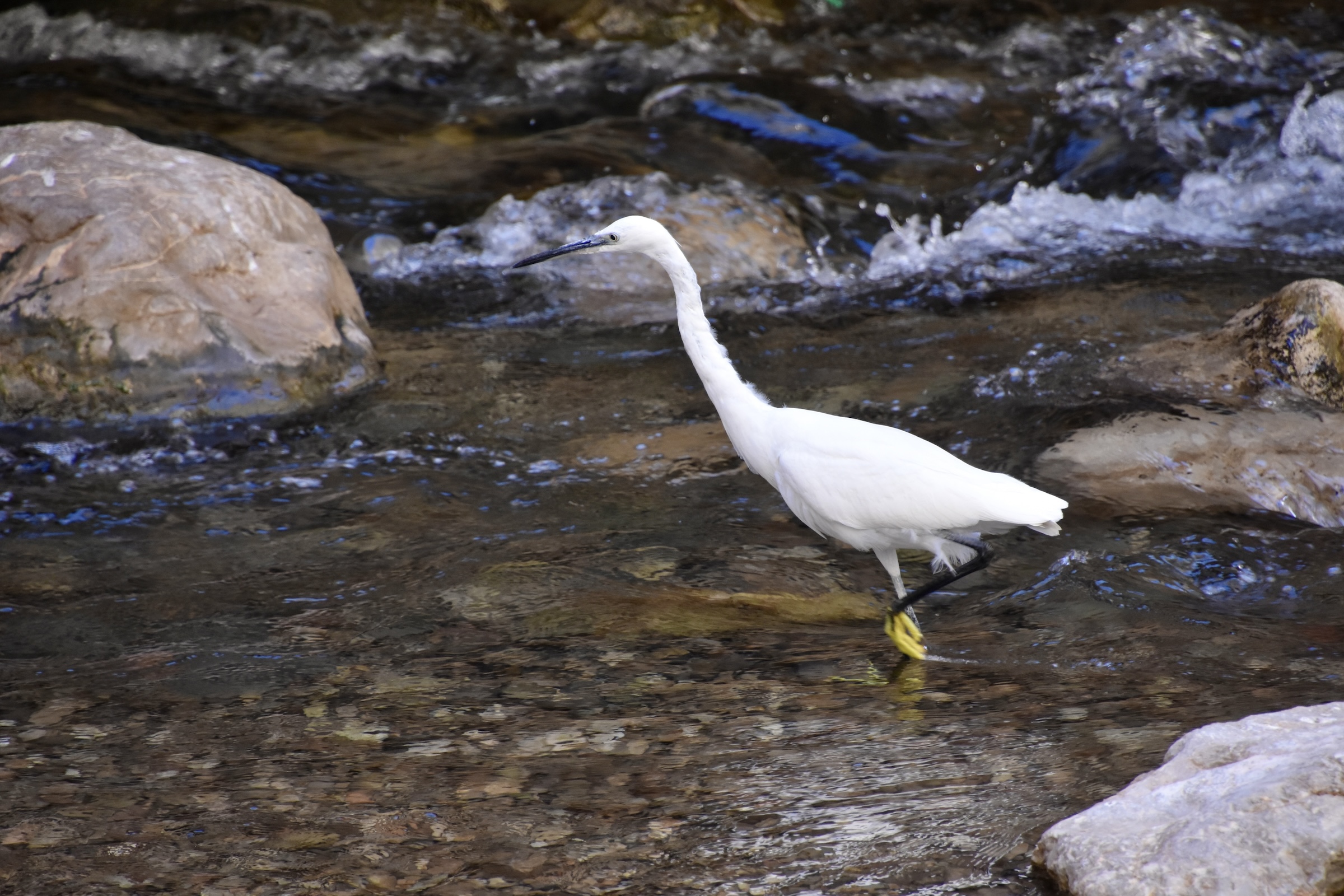
I did manage to get this shot of some of the group from ground level and it doesn’t look so bad after all.
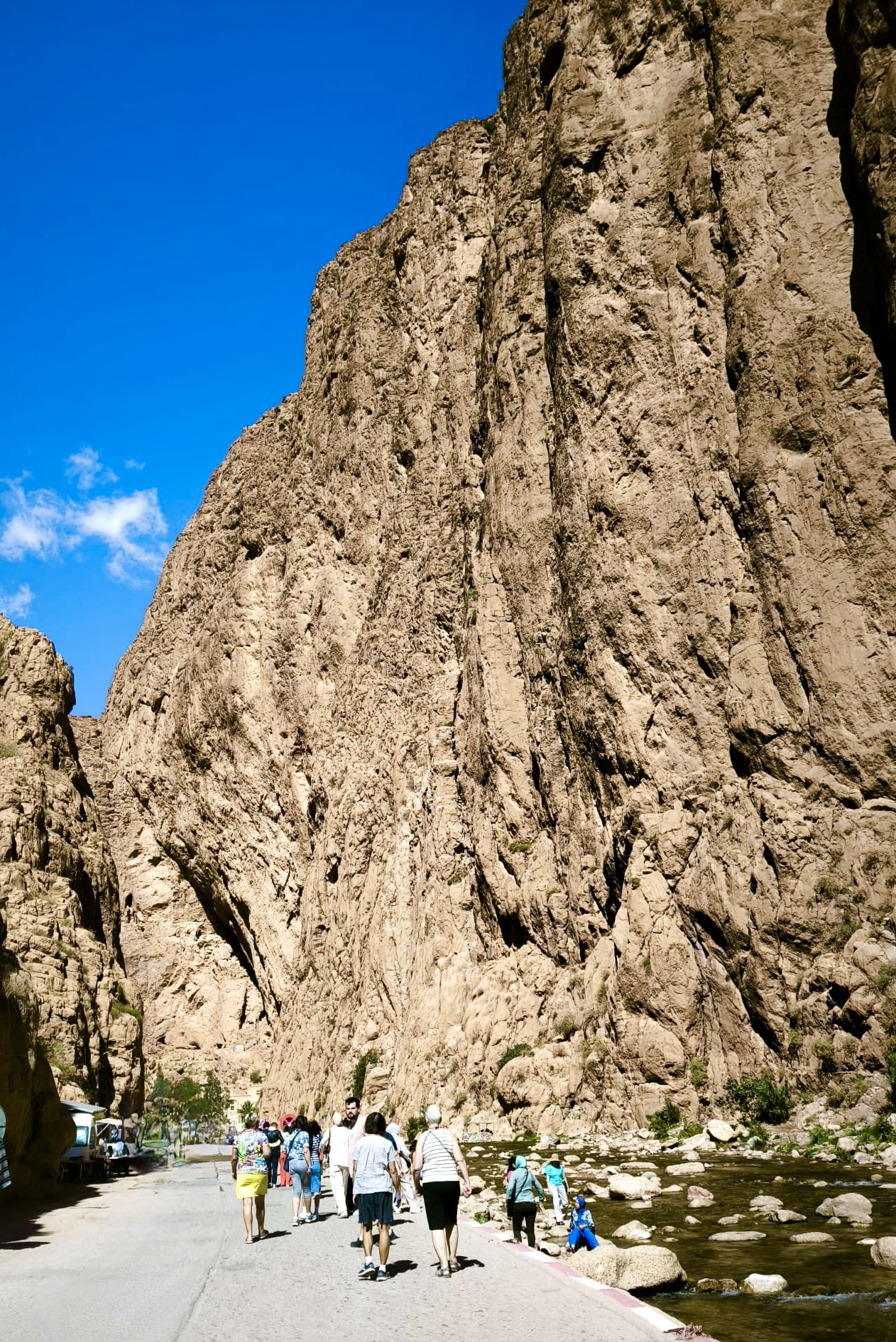
Todra Gorge was about the only place on the entire tour that I would have liked the time to explore on my own or even been able to drive to the nearby Dades Gorge which is apparently almost as spectacular and far less crowded. However, as you can see in this photo of the road to get there, you can understand why buses can’t make the trip.

Kasbah Amridil
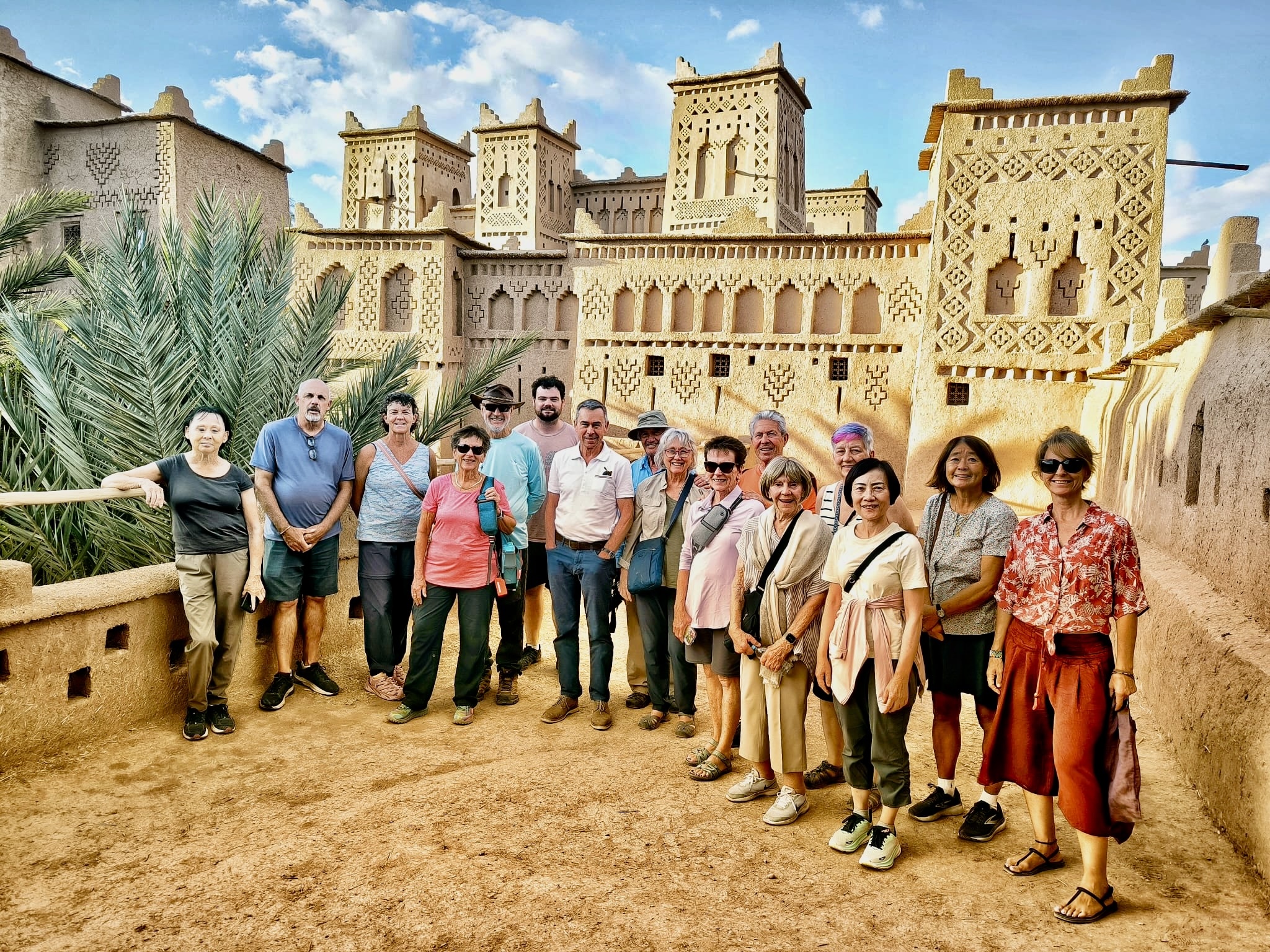
As I have described in previous posts, a kasbah is a fortified citadel built to house a wealthy family or clan who generally rule over the immediate vicinity. They are very similar in nature to the alcazabas of Andalusia or the castles of medieval Europe. We have already visited the Kasbah of the Udayas in Rabat which is huge and was the stronghold of an entire dynasty. However, when I think of the word kasbah I think of something on a much smaller scale and with a distinctive look – something like what we are standing in front of in the photo above.
Unlike the alcazabas and castles of Europe or even the Kasbah of the Udayas which are built of stone, the kasbahs in the south of Morocco are built of a mixture of large bricks made with compressed earth, straw and water. The result is that they deteriorate much faster than stone structures and although it is estimated there might have been over 1,000 of these kasbahs in Morocco, not that many are still in good enough condition to host visitors. Kasbah Amridil is one of the exceptions.
This kasbah is located within the fertile Skoura oasis some 45 kms. (28 miles) from the city of Ouarzazate on a route famous for its many kasbahs. It was built in the 17th century by Berber chieftain Mohammed Nassiri Skouri and is still owned by his descendants who have preserved it largely intact as it was built. Unlike the kasbahs that have been converted into luxury hotels where the interiors have been gutted and rebuilt to modern standards, Kasbah Amridil is authentic and one can get a sense of what it was like living here hundreds of years ago.
Before entering the Kasbah Amridil I take a walk to these ruins that are actually attached to one side of it. This was once a ksar which by now our group knows to be a fortified village where the hoi polloi carried out their existence in the shadow of their wealthy neighbour. It’s a good example of what will happen to these mud brick structures if nature is allowed to take its course.

This the entrance with a lolling figure on the left that is actually a very common sight in Morocco.
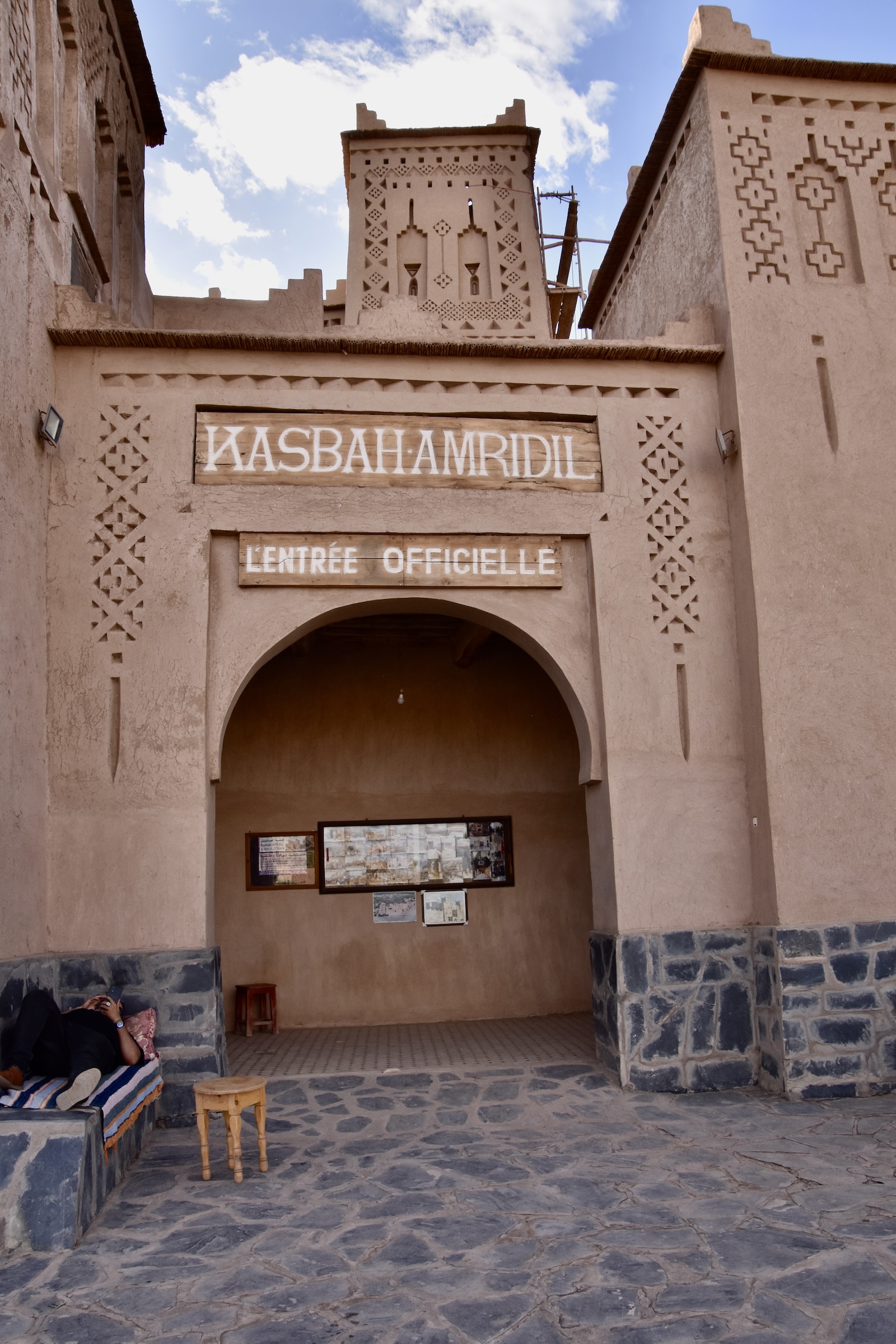
This is our guide for the next hour or so and unlike most of our local guides who are pretty serious, this guy is a jokester and pretty damn funny. I wish I had recorded some of his zingers.
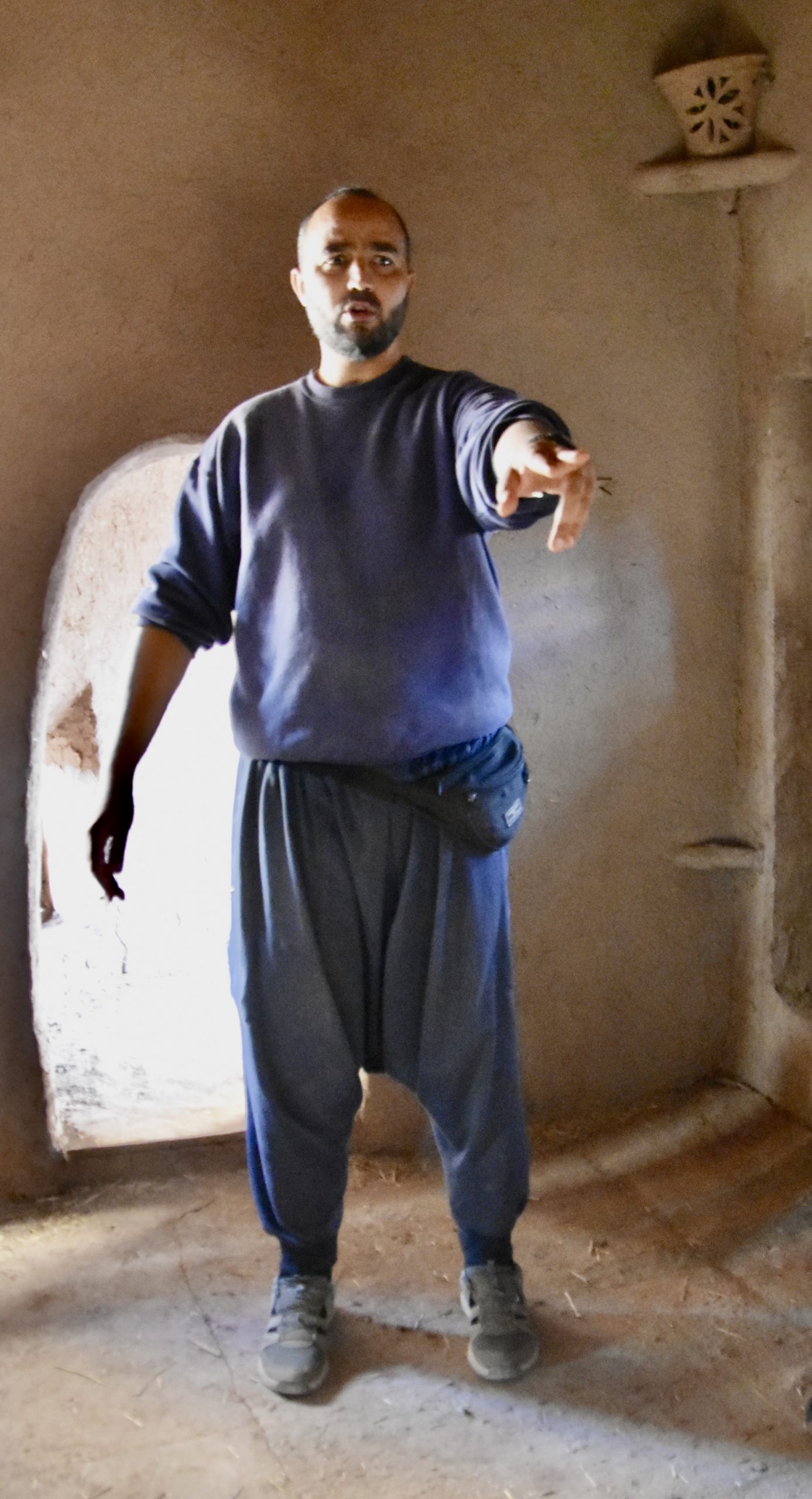
He gives is a history of the Kasbah Amridil and how it has been handed down over the generations and how they have accepted the obligation to keep it in good repair. In order to do that they still need to make the bricks the same way they have been made for a thousand years or more.

This is a traditional brick box into which the earth or clay is combined with straw and water and compacted until the water is squeezed out and the brick hardened. It’s a laborious and as it turns out, almost continuous process in order to keep the walls in pristine condition. During the tour our guide pointed out numerous walls that had been repaired only weeks or months before, but that looked no different than other walls that had been in place for much longer periods of time. It soon became clear that these type of kasbahs were in need of constant repair and that it was a big commitment for any family to undertake that task, especially over hundreds of years.
Now if you had a romantic notion of life inside these kasbahs, as I did, it was soon dispelled. The interior rooms were small and somewhat gloomy.
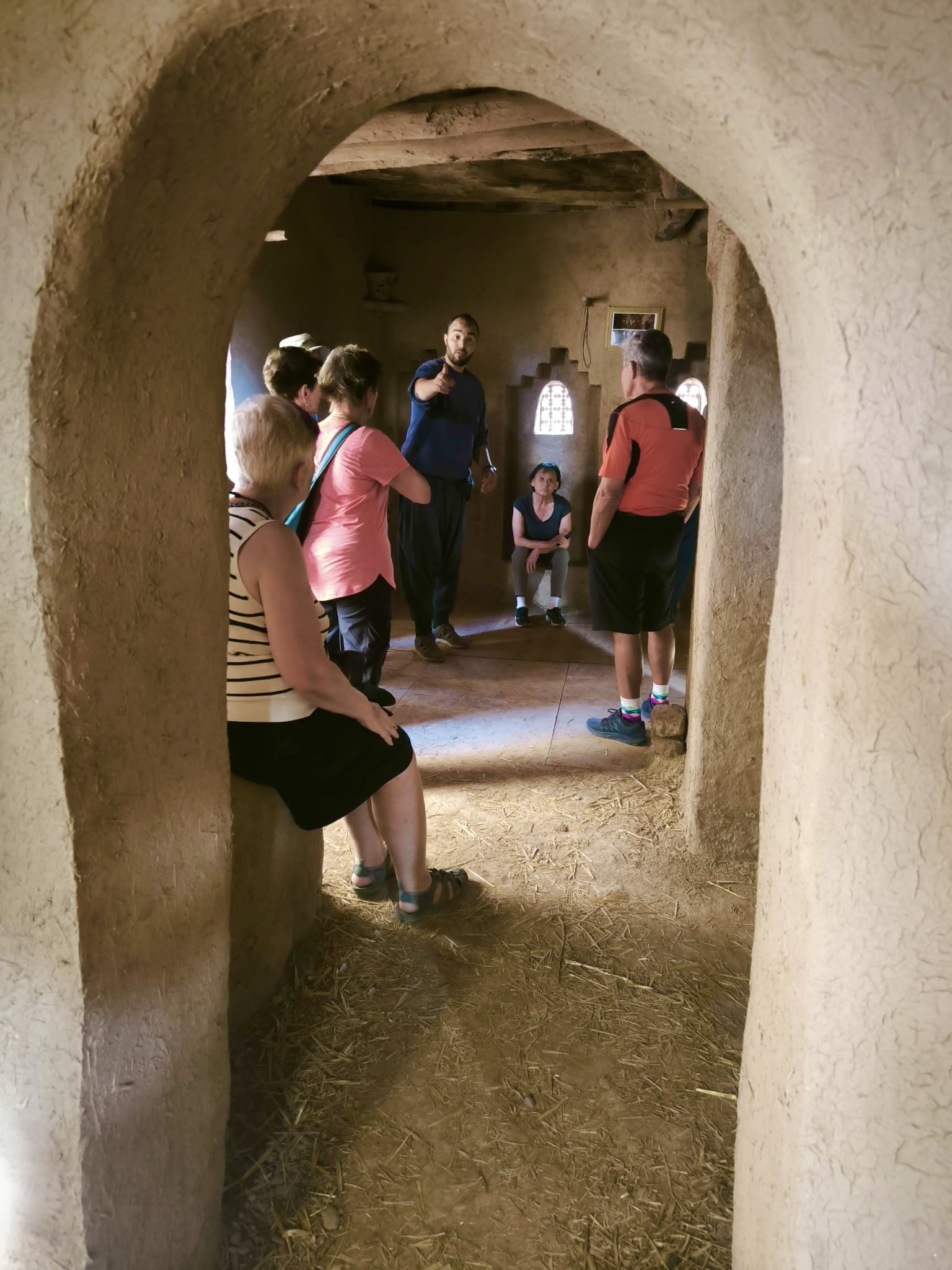
There were numerous clay cooking ovens that had the distinct look of a character right out of a Robert Crumb cartoon.

Like the riads we had stayed in, there was a central open courtyard which provided some green relief from the relentlessly tawny walls. This is also where the wells, the lifeblood of the kasbah were found.
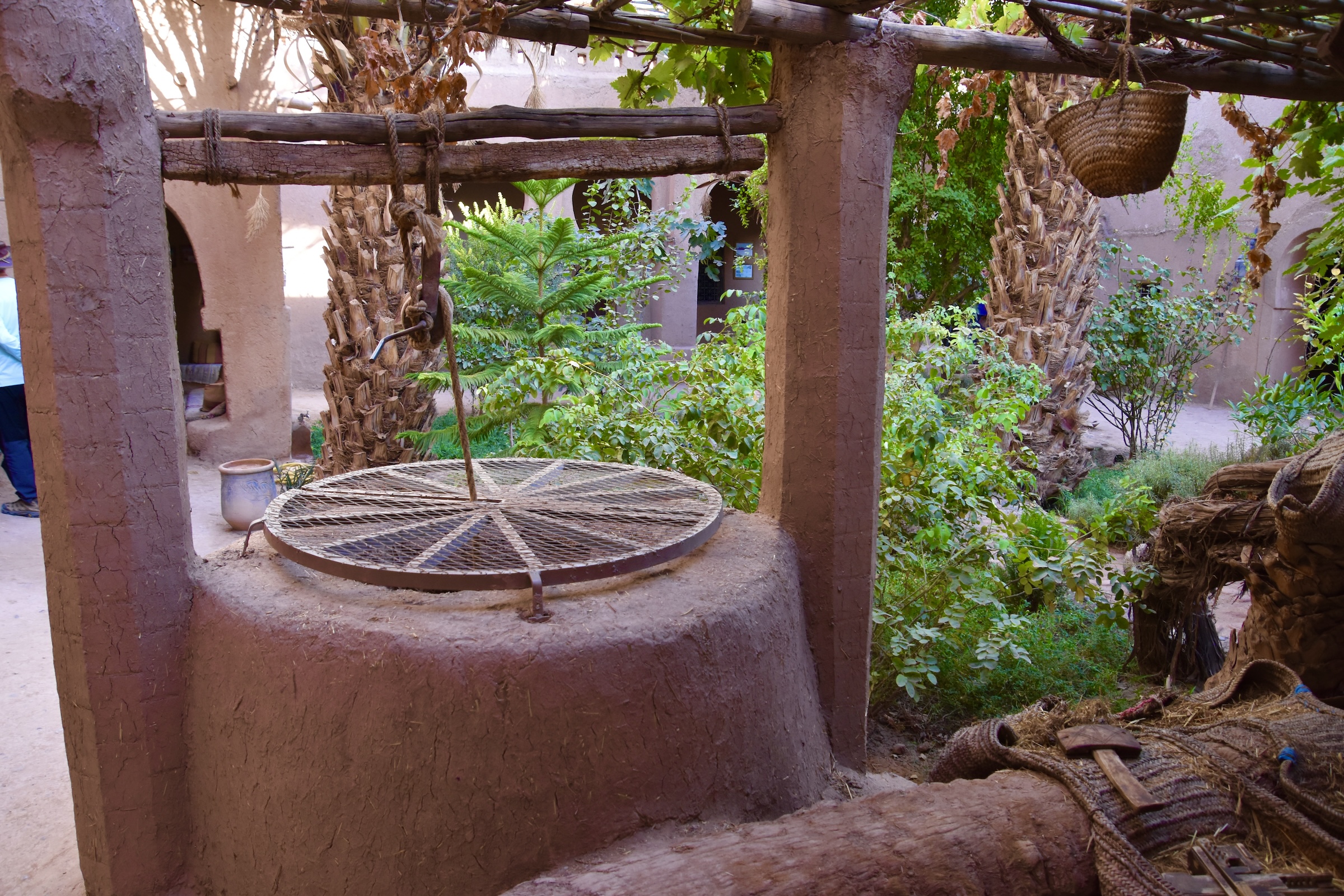
Ok, so the interior of the kasbah was not something out of The Arabian Nights in terms of grandeur or romance, but once you climbed to the parapets and got a good look at the exterior architecture, wow! Now this is what I came to Morocco to see.

This is a closer look at one of the main towers.
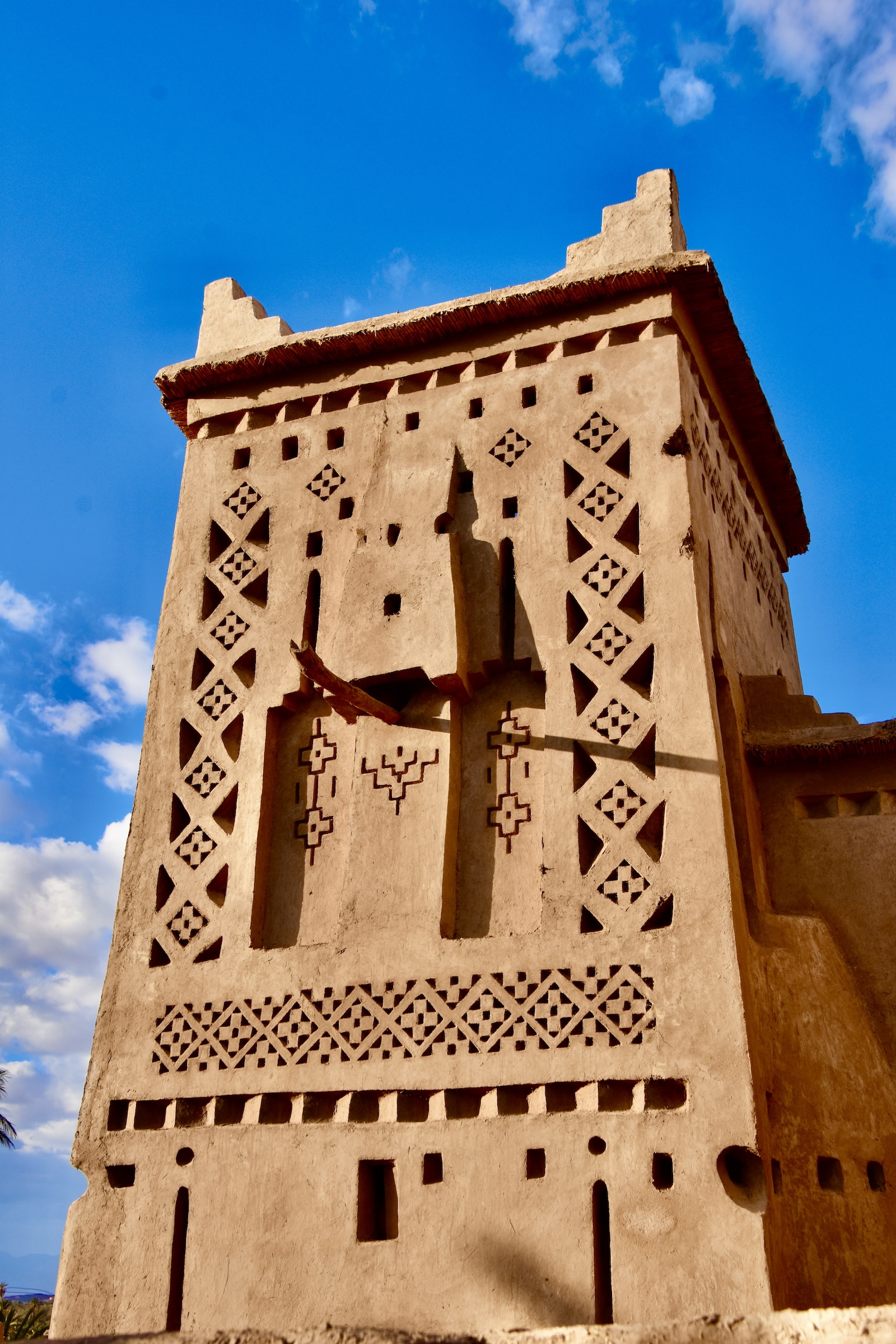
And the light of the Moroccan sky was perfect.
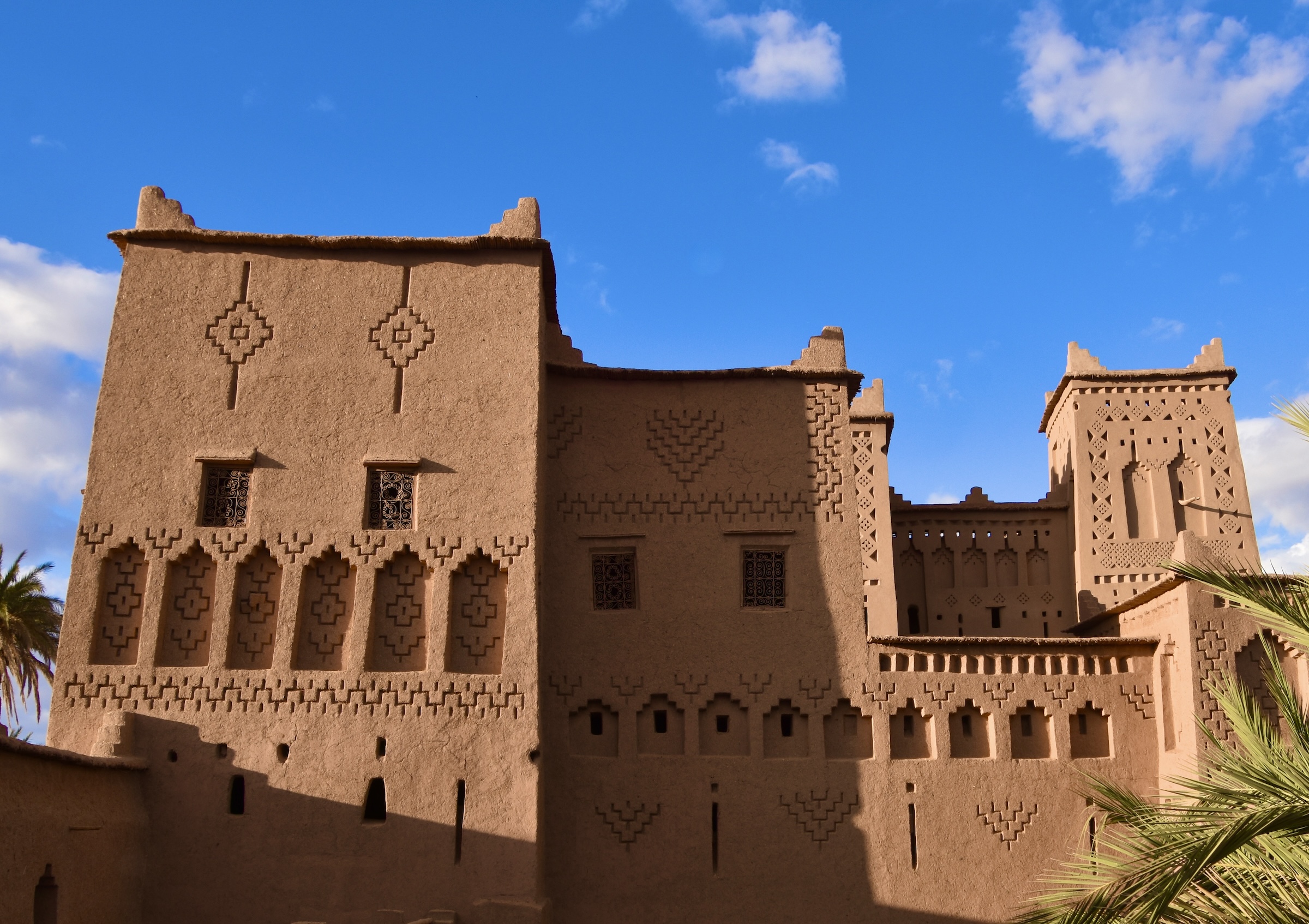
And perhaps the piece de la resistance was the view of the Skoura oasis from the ramparts of the Kasbah Amridil with at least three other kasbahs in the picture.
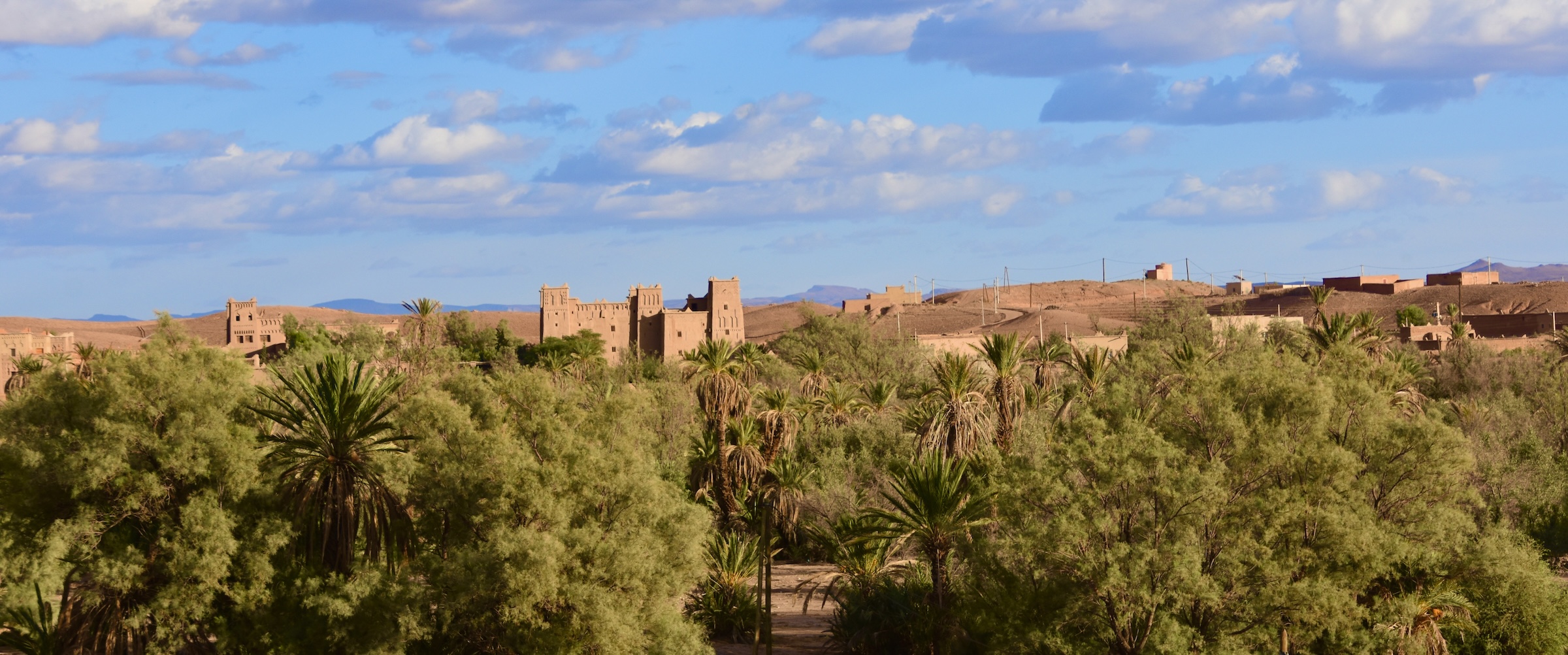
For me this was the essence of Morocco and this image will be indelibly imprinted on my memory for years to come. And the best thing about our visit to Kasbah Amridil was that he had the place to ourselves which was a 180° turn from Todra Gorge.
From here we made our way to another kasbah just outside of Ouarzazate, the Kasbah Zitoune where I had this view from our room.
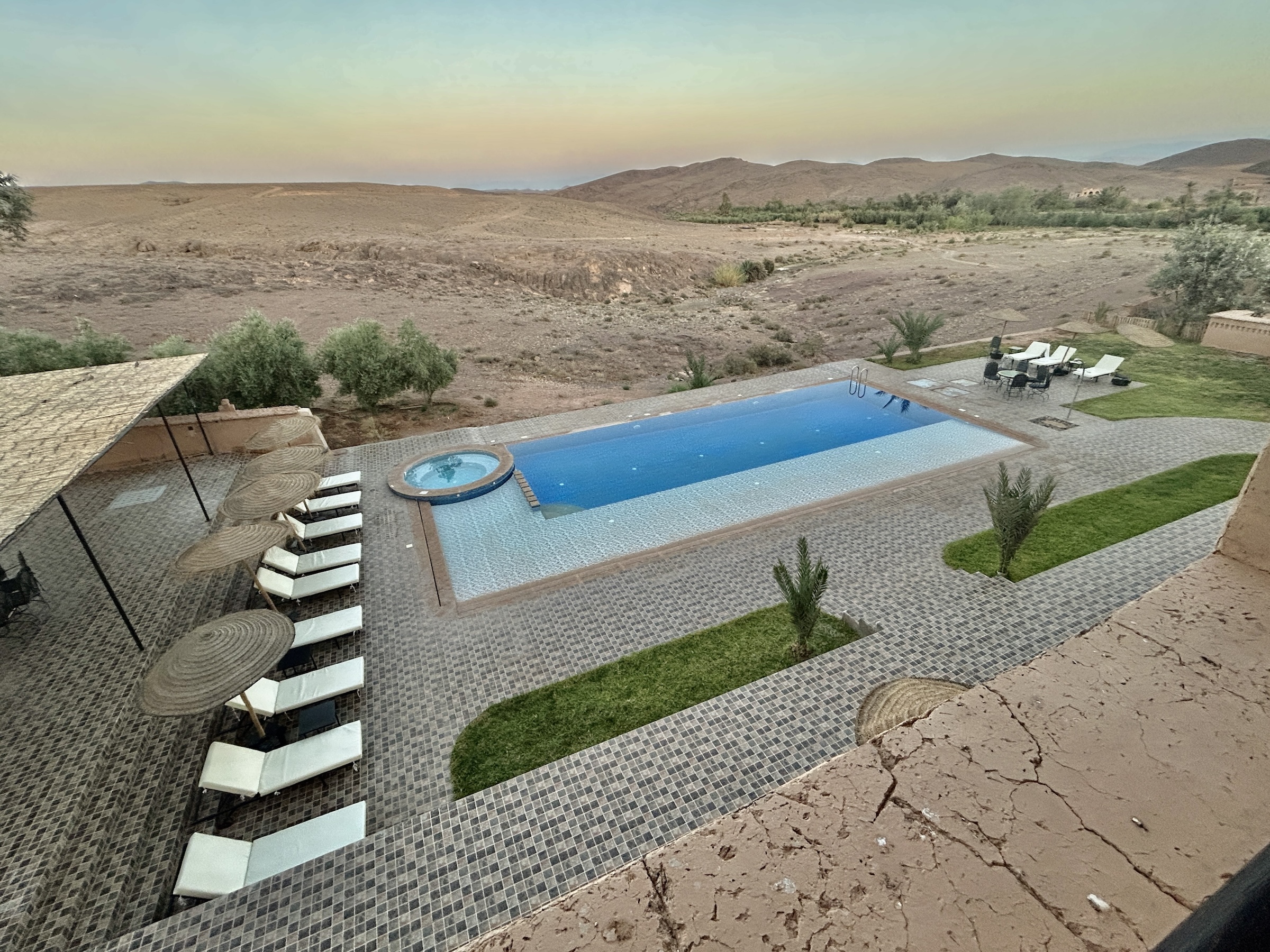
In the next post we are going to shift gears completely and visit the largest film studio in Africa. If you fancy being in the movies you might want to come along.

